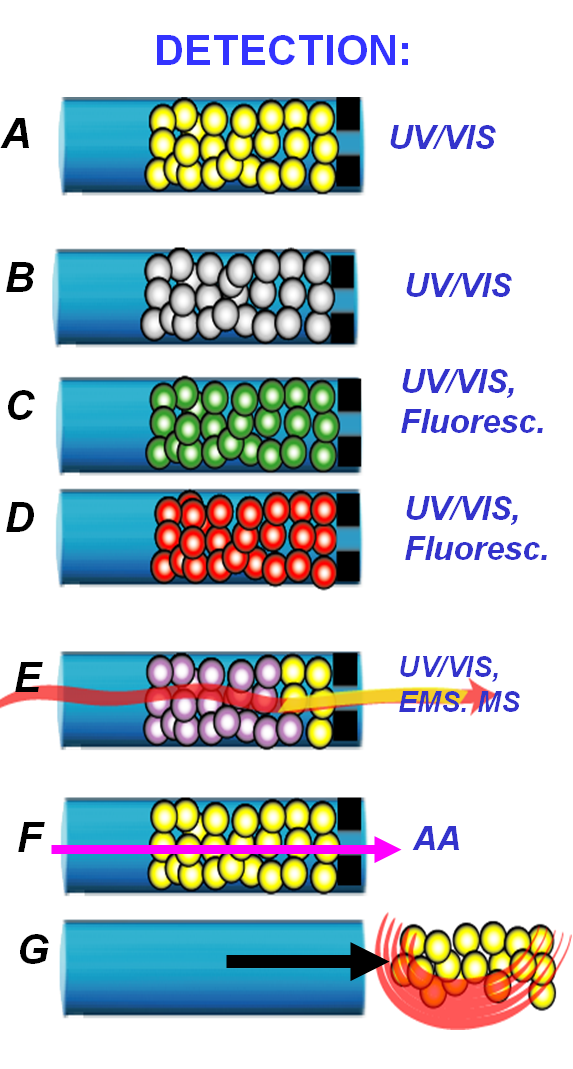Two strategies – and their combinations – have evolved so far. If the analyte molecules absorb light in their native form, or if they react with functional groups on bead surfaces forming a product (A), Bead Injection Spectroscopy is the method of choice. Even if analyte molecules cannot be detected in their native form (B), BI Spectroscopy can be used, if additional reactions (C) can be carried out on bead surfaces by means of fluorogenic reagents or by enzyme linked indicator reactions (D). (Carroll 2003)
In yet another approach, target biomolecules have been eluted from captured beads (E), into an Electrospray Mass Spectrometer (Ogata 2002) with the aim of removing matrix proteins. Similarly, trace elements were eluted to AA (F) with the aim of increasing sensitivity and detection limit (Hansen 2001). Proteins have been eluted and measured by UV spectrophotometry (Erxleben 2005). Finally, trace metals were assayed by Electrothermal Atomic Absorption, after beads were transported to a graphite furnace and incinerated (G). (Hansen 2001)
J. Wang & E.H .Hansen Atomic Spectroscopy 22, 312 (2001)
Y. Ogata, et.al., Anal. Chem., 74, 4702, (2002)
A. Carroll et.al. Analyst, 127, 1228 ( 2002)
Analyte Detection
3.1.6.










